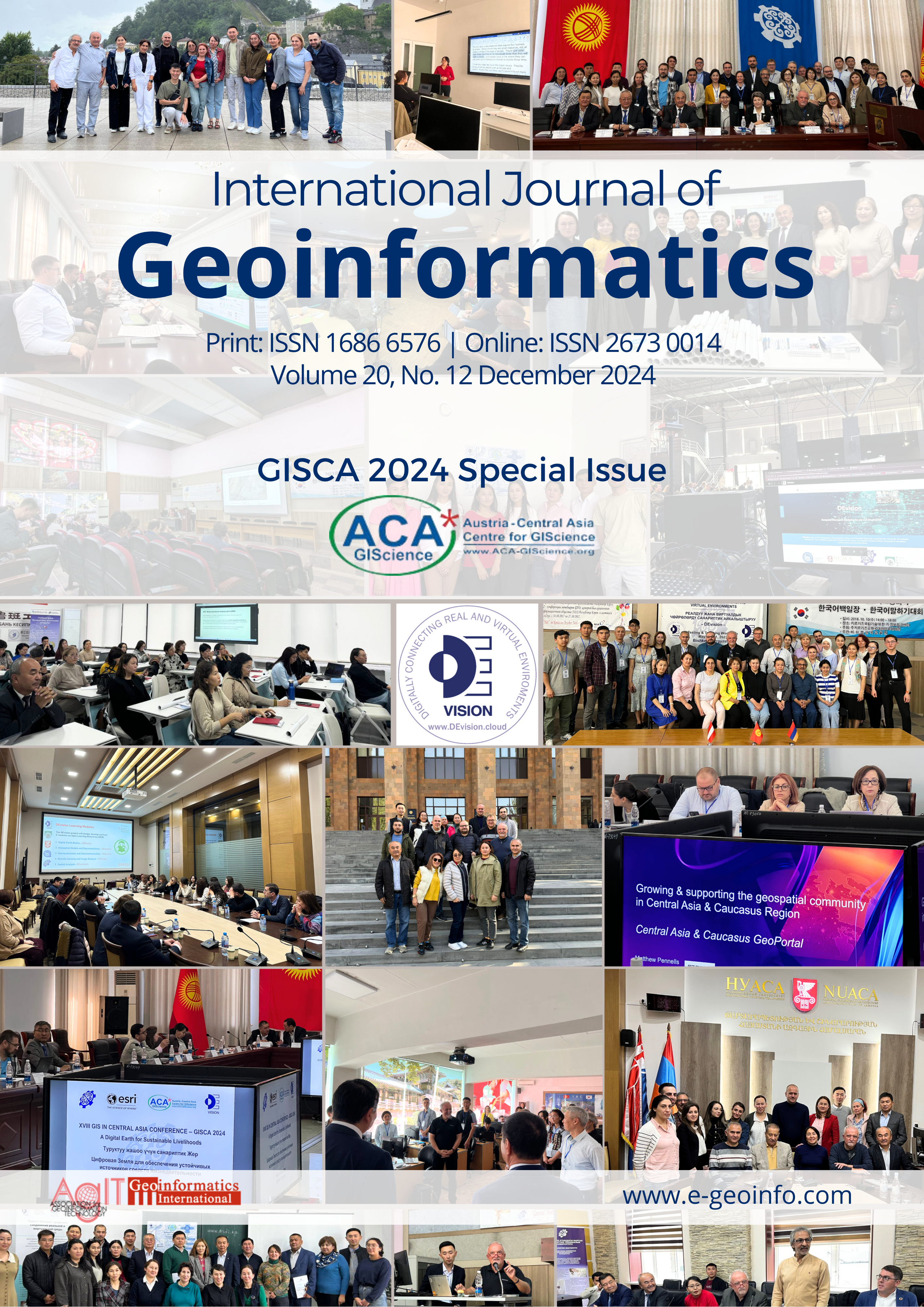Informing Distributed Hydrological Modeling with Worldwide Open Data Services
Main Article Content
Abstract
Continuity of water supply is critical for sustaining livelihoods of (Central Asian) mountain communities, which are typically not connected to any regional water utility. Water supply is indispensable for household usage incl sanitation, livestock survival, farming of agricultural crops and small-scale hydropower generation. In mountain environments seasonal as well as multi-annual buffering and storage are limited, surface runoff into streams is the main source of water. The WaterFlow project has been designed to enable academic partners in the Kyrgyz Republic to perform hydrographic analysis of small mountain watersheds to explore current and future potentials for local communities. One key objective is the quantification of the impact of regional climate change scenarios on streamflow as a basis for assessment of future village-level livability and potential mitigation efforts. Hydrologic surface runoff estimation and simulation is a data-intensive process requiring detailed topographic [1], landcover / landuse and climate change scenario data for distributed modeling. While access to national level or regional data frequently poses a major obstacle to large scale local research. The current and increasing availability of high-resolution global data sets facilitates analyses essentially anywhere on the planet. This paper serves as a case study and process documentation how the ‘Living Atlas’ as a platform consolidating a rich and continuously updated collection of worldwide openly accessible data supports, inter alia, the foundation data for distributed modeling of surface runoff essentially anywhere on the planet. This research does not aim at achieving results specifically valid for the sample study areas, the latter rather serve as demonstrators for analyses based on cloud-based data services. Steps beyond data preparation, including local observations and integration of climate and land cover change scenarios are briefly mentioned to contextualize the data preparation and pre-processing steps presented below. Altogether, the WaterFlow initiative aims at supporting the development of science-based local capacity for environmental monitoring, within the explicit context of appreciating the potential impacts of likely climate changes on the local water balance.
Article Details

This work is licensed under a Creative Commons Attribution 4.0 International License.
Reusers are allowed to copy, distribute, and display or perform the material in public. Adaptations may be made and distributed.

